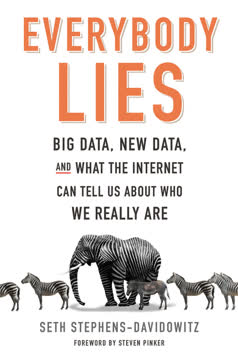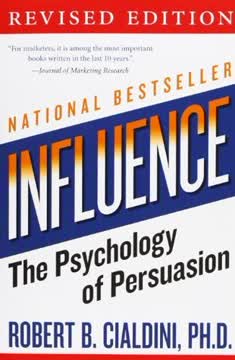Key Takeaways
1. Iconic brands perform identity myths that address cultural contradictions
Identity myths are useful fabrications that stitch back together otherwise damaging tears in the cultural fabric of the nation.
Myth as cultural salve. Iconic brands succeed by performing myths that resolve acute tensions in society. These myths provide imaginative solutions to the identity desires and anxieties people experience in their everyday lives. By addressing collective anxieties shared across a large fraction of citizens, iconic brands create extraordinary value.
Anatomy of identity myths. Effective brand myths are simple fictions that:
- Address cultural anxieties from afar, in imaginary worlds
- Draw from populist worlds as source material for authenticity
- Provide symbolic resolutions to contradictions in national ideology
- Allow customers to experience the myth through ritual consumption
Historical context is crucial. The power of a brand's myth depends entirely on how well it fits a particular historical moment. As society's ideologies shift over time, brands must evolve their myths to remain relevant.
2. Cultural branding differs from mind-share, emotional, and viral branding
Cultural branding turns this approach to communications on its head. In cultural branding, communications are the center of customer value.
Paradigm shift. Cultural branding fundamentally differs from conventional branding models:
- Mind-share: Focuses on owning abstract associations
- Emotional: Emphasizes forging emotional connections
- Viral: Relies on influential consumers to spread the brand
Key differences of cultural branding:
- Prioritizes myth-making over persuasion
- Values specific cultural expressions over abstract associations
- Adapts to historical changes rather than maintaining consistency
- Leads culture rather than chasing trends
Strategic implications. Cultural branding requires managers to develop cultural knowledge, identify emerging contradictions in society, and direct the creation of resonant myths. This approach demands a different skill set and organizational structure than conventional branding.
3. Brands compete in myth markets, not product markets
Identity brands compete with other cultural products to perform myths that resolve cultural contradictions.
Redefining competition. For identity brands, the competitive landscape extends beyond product categories to include all cultural products that address similar identity desires. Brands vie with films, music, books, and other media to provide compelling myths.
Anatomy of myth markets:
- National ideology: Shared values and aspirations
- Cultural contradictions: Tensions between ideology and lived experience
- Populist worlds: Authentic subcultures that serve as raw material for myths
Strategic targeting. Successful iconic brands identify the most opportune myth market by:
- Analyzing emerging cultural contradictions
- Assessing the brand's cultural and political authority
- Selecting a populist world that aligns with the brand's identity
Brands must be prepared to shift targets as cultural disruptions create new myth markets and render old ones obsolete.
4. Cultural briefs direct the creation of compelling brand myths
Cultural branding requires strategic direction that pushes commercial artists toward creating the right kind of story for the brand and rules out inappropriate stories.
Redefining the creative brief. The cultural brief replaces conventional positioning statements with specific direction on myth creation. It consists of three key elements:
- Myth treatment: Outline of the plot, characters, and setting
- Populist authenticity: Strategy for establishing credibility within the chosen populist world
- Charismatic aesthetic: Distinctive communication style organic to the populist world
Strategic guidance. The cultural brief provides creatives with a roadmap for developing myths that:
- Address the most pressing cultural contradictions
- Draw authentically from relevant populist worlds
- Employ a distinctive and compelling aesthetic
Balancing act. Managers must provide enough direction to ensure strategic alignment without stifling creative expression. The goal is to channel creativity toward the most culturally potent expressions of the brand's myth.
5. Brand equity stems from cultural and political authority
When identity brands are successful, they accrue two kinds of assets: cultural authority and political authority.
Redefining brand equity. For iconic brands, equity is not based on owning abstract associations, but on the brand's reputation for telling certain kinds of valuable stories. This equity takes two forms:
- Cultural authority: The right to author similar types of myths in the future
- Political authority: The ability to address the identity desires of a specific constituency
Strategic leverage. Managers can increase brand equity by:
- Identifying opportunities to extend the brand's existing cultural authority
- Adapting myths to address new contradictions faced by the brand's constituency
- Maintaining authenticity while evolving the brand's political stance
Navigating disruptions. When cultural shifts render a brand's myth obsolete, managers must leverage the brand's accumulated authority to craft new myths that resonate with emerging cultural tensions.
6. Brand loyalty functions as a social network with three constituencies
Brand loyalty is held together by the relationships between these different types of customers.
Three key constituencies:
- Followers: Core customers who strongly identify with the brand's myth
- Insiders: Gatekeepers from the populist world who bestow authenticity
- Feeders: Cultural parasites who thrive on the brand's popularity
Interdependent network. Brand loyalty stems from the interactions between these groups:
- Followers depend on insiders for legitimacy
- Feeders rely on followers for identity value
- Insiders need both groups to maintain their status
Strategic implications. Managers must:
- Nurture relationships across all three constituencies
- Balance the needs and expectations of each group
- Recognize that alienating insiders can undermine the entire network
Understanding this social dynamic is crucial for maintaining and expanding brand loyalty over time.
7. Culture industries and populist worlds coauthor brand myths
Iconic brands are built by cultural activists. Yet, while many companies would love to create a Nike, a Budweiser, or a Mountain Dew, most are organized to act as cultural reactionaries, whose practices are the opposite of the activism that is required.
Collaborative myth-making. Iconic brands often rely on external coauthors:
- Culture industries: Films, music, news media that circulate brand stories
- Populist worlds: Subcultures that provide raw material for authentic myths
Strategic opportunities:
- Identify and leverage relevant cultural texts that align with the brand's myth
- Establish authentic connections with populist worlds
- Collaborate with culture industry partners to extend the brand's story
Managerial challenges. Brand managers must:
- Develop cultural literacy to engage effectively with coauthors
- Balance control of the brand's story with authentic collaboration
- Navigate potential conflicts between commercial and cultural interests
8. Advancing the myth requires creative evolution and cultural sampling
To extend a powerful myth, the brand's communications must steer a path between two traps: milking the myth to capitalize on its popularity, and abandoning the myth entirely to pursue the next big trend.
Creative evolution strategies:
- Develop plot and characters: Treat the myth as an ongoing story
- Sample new popular culture: Incorporate relevant cultural artifacts
- Speak from new populist worlds: Engage emerging subcultures
- Push the myth's boundaries: Explore innovative interpretations
Balancing act. Managers must:
- Maintain the core elements that make the myth resonate
- Introduce fresh material to keep the story engaging
- Avoid formulaic repetition or chasing unrelated trends
Cultural relevance. Successful myth advancement requires:
- Deep understanding of emerging cultural tensions
- Ability to identify and integrate relevant popular culture
- Willingness to take creative risks while staying true to the brand's essence
9. Cultural activism is key to building and sustaining iconic brands
To systematically build iconic brands, companies must reinvent their marketing function. They must assemble cultural knowledge, rather than knowledge about individual consumers.
Organizational transformation. Building iconic brands requires:
- Developing cultural knowledge: Understanding societal shifts and tensions
- Strategizing culturally: Identifying myth markets and crafting cultural briefs
- Hiring cultural activists: Recruiting talent with cultural literacy and creativity
Four types of cultural knowledge:
- Brand's cultural and political authority
- Followers' identity projects
- Populist world immersion
- Emerging cultural contradictions
Managerial implications:
- Shift focus from individual consumer insights to broader cultural trends
- Develop skills in cultural analysis and myth-making
- Restructure marketing organizations to prioritize cultural activism
By embracing these principles, companies can cultivate the capability to systematically build and sustain iconic brands that lead culture and create enduring value.
Last updated:
FAQ
What's How Brands Become Icons about?
- Cultural Branding Focus: The book by Douglas B. Holt explores how brands achieve iconic status through cultural branding, emphasizing storytelling and myth-making over traditional marketing strategies.
- Iconic Brand Examples: It analyzes brands like Budweiser, Mountain Dew, and Volkswagen to illustrate how they navigate cultural shifts and maintain relevance.
- Strategic Framework: Holt presents a framework for leveraging cultural and political authority to build and sustain brand identity value, moving beyond traditional branding models.
Why should I read How Brands Become Icons?
- Insightful Analysis: The book offers a deep dive into cultural branding principles, challenging conventional branding wisdom and providing a fresh perspective on brand identity.
- Real-World Case Studies: Holt uses empirical research and historical case studies, making the concepts relatable and actionable for marketers and brand managers.
- Cultural Relevance: Understanding cultural branding is crucial in today’s market, where consumers seek brands that resonate with their identities and values.
What are the key takeaways of How Brands Become Icons?
- Cultural Myths Matter: Iconic brands are built on identity myths that address collective cultural anxieties and desires, helping consumers navigate societal expectations.
- Targeting Myth Markets: Brands should focus on myth markets rather than product markets, requiring a nuanced understanding of the cultural landscape.
- Authenticity and Authority: Successful brands leverage cultural and political authority to maintain relevance, demonstrating a genuine connection to the populist worlds they draw from.
How does Douglas B. Holt define cultural branding in How Brands Become Icons?
- Cultural Branding Definition: Holt defines it as a strategy focusing on creating identity myths that resonate with consumers' cultural values and societal contradictions.
- Myth Creation: It involves crafting narratives that address consumer anxieties and desires, allowing brands to become symbols of cultural significance.
- Strategic Framework: The book outlines a framework for developing cultural branding strategies, emphasizing the importance of understanding the cultural context.
What is an iconic brand according to How Brands Become Icons?
- Definition of Iconic Brand: An iconic brand achieves cultural significance and identity value that transcends its product offerings, becoming symbols of societal values.
- Cultural Resonance: These brands resonate deeply with consumers, addressing collective cultural myths and providing a sense of identity.
- Examples of Iconic Brands: Holt discusses brands like Coca-Cola, Nike, and Harley-Davidson as examples of iconic brands that maintain relevance over time.
How does How Brands Become Icons differentiate between myth markets and product markets?
- Myth Markets Explained: Myth markets are cultural spaces where brands compete to perform identity myths that resonate with consumer desires and anxieties.
- Cultural Context: Brands must understand the cultural context and collective narratives shaping consumer identities, beyond just product features.
- Strategic Implications: Targeting myth markets allows brands to create meaningful connections, leading to stronger brand loyalty and identity value.
What are the axioms of cultural branding presented in How Brands Become Icons?
- Addressing Cultural Contradictions: Iconic brands provide identity value by addressing societal contradictions, helping consumers navigate cultural tensions.
- Performing Identity Myths: Successful brands perform identity myths that resonate with consumers, offering symbolic resolutions to their anxieties.
- Charismatic Aesthetic: A brand's communications must be charismatic and compelling, drawing from the cultural expressions of the populist world it represents.
What role do populist worlds play in cultural branding according to Holt?
- Source of Authenticity: Populist worlds provide raw materials for brand myths, offering authentic cultural expressions that resonate with consumers.
- Cultural Context: These worlds are characterized by intrinsic values and beliefs, which brands can tap into to create meaningful narratives.
- Engagement with Consumers: Successful engagement with populist worlds fosters a sense of belonging and community, essential for building iconic status.
How does How Brands Become Icons suggest brands can maintain their relevance?
- Adapt Myths: Brands should continuously adapt their myths to address evolving consumer contradictions and desires, ensuring cultural relevance.
- Engage with Pop Culture: By integrating elements from contemporary culture, brands can refresh narratives and connect with new audiences.
- Community Building: Fostering a sense of community among followers, insiders, and feeders helps maintain brand loyalty and relevance.
What role do social networks play in brand loyalty as discussed in How Brands Become Icons?
- Three Constituencies: Holt identifies followers, insiders, and feeders as key constituencies forming a social network around iconic brands.
- Emotional Connection: Followers are deeply connected to the brand’s myth, insiders provide legitimacy, and feeders amplify the brand’s reach.
- Collective Decision: Leaving an iconic brand often requires a collective decision among these constituencies, making brand loyalty a social phenomenon.
What are some examples of iconic brands discussed in How Brands Become Icons?
- Budweiser: The brand evolved from celebrating working-class masculinity to embracing a slacker identity, maintaining relevance amidst cultural changes.
- Mountain Dew: Its transformation from a hillbilly myth to a slacker identity illustrates successful navigation of cultural disruptions.
- Volkswagen: The brand's journey from the Beetle's bohemian myth to the "Drivers Wanted" campaign shows adaptability in maintaining iconic status.
What are the best quotes from How Brands Become Icons and what do they mean?
- "Iconic brands provide extraordinary identity value...": Highlights the importance of understanding cultural context in branding, resonating with societal values.
- "Cultural branding applies particularly to categories...": Emphasizes the significance of identity in consumer behavior, suggesting brands must connect personally.
- "Brands become iconic when they perform identity myths...": Illustrates how brands create meaningful narratives that resonate with consumer experiences and aspirations.
Review Summary
How Brands Become Icons receives mixed reviews, with an average rating of 3.83/5. Readers appreciate the insights on cultural branding and case studies of iconic brands. Some find the research thorough and the approach innovative, while others criticize the book for oversimplification and dated examples. The writing style is described as academic, potentially challenging for newcomers. Reviewers note the focus on masculine brands and question the universal applicability of the cultural branding model. Despite criticisms, many readers find value in the book's exploration of brand-building strategies.
Similar Books










Download PDF
Download EPUB
.epub digital book format is ideal for reading ebooks on phones, tablets, and e-readers.




